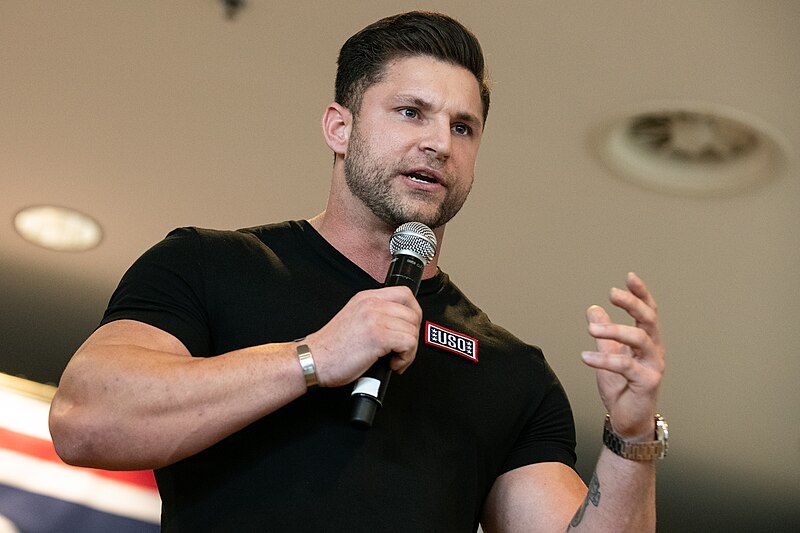Creating the Introduction, Step 4: The Core of the Speech
 The last step of the introduction before transitioning into the body of the speech involves showing the audience what they can expect to hear throughout the presentation. Break the core of the speech down into the following parts: the central idea (thesis) and the preview of main points. For novice speakers, this step may appear repetitive—and it is. Human listeners are remarkably inept at remembering what they hear, so effective speakers know to cover their most important points at least three times throughout a speech. This becomes the first opportunity for speakers to share their central idea and main points, but it won’t be the last.
The last step of the introduction before transitioning into the body of the speech involves showing the audience what they can expect to hear throughout the presentation. Break the core of the speech down into the following parts: the central idea (thesis) and the preview of main points. For novice speakers, this step may appear repetitive—and it is. Human listeners are remarkably inept at remembering what they hear, so effective speakers know to cover their most important points at least three times throughout a speech. This becomes the first opportunity for speakers to share their central idea and main points, but it won’t be the last.
Central Idea
Speakers should boil down all the ideas they want to express in the speech into just one declarative sentence. That sentence serves as the speech’s central idea.
Speakers should ask themselves what one piece of information ranks as the most important for the audience to know and remember above all other information. The central idea should tie together all of the main points and their supporting points, for everything throughout the rest of the speech relates to this central idea. Think of it as the thesis statement. The following example shows a central idea that needs a bit more revision followed by one that does not:
 Needs work: “How to shoot a basketball.”
Needs work: “How to shoot a basketball.”
Why it needs work: First, this is an incomplete sentence. Second, it makes no assertion or declaration. Third, it more resembles the topic or title of a speech rather than a central idea or thesis.
Better: “Learning how to shoot a basketball may seem difficult but can be perfected through practicing fundamental techniques.”
Why this statement works better: This complete sentence makes an assertion that can be proven or disproven through research and fact. The audience can expect to hear the speaker talk about the difficulties of learning how to shoot a basketball, fundamental techniques needed, and how they might incorporate those techniques into practice.
Preview of Points
In the final step of the introduction, consider relying on Carnegie’s quote to “tell them what you are going to tell them.” After relaying the central idea with this particular audience, briefly tell them what points they can expect to hear during the presentation that follows. Note the keyword, “briefly” here. Rarely should a preview require the speaker to deliver more than three sentences or so.
The preview provides the audience members with a set of mental bookmarks to help organize the information in their minds. This way, as the speaker transitions between main points, the audience members effectively know what to expect. This knowledge maintains their attention spans. Additionally, this step proves to the audience that the speaker came well prepared and organized, further cementing the person’s credibility as a speaker.
 The following example demonstrates an effective preview, beginning with the earlier central idea and specific purpose statements:
The following example demonstrates an effective preview, beginning with the earlier central idea and specific purpose statements:
“Learning how to shoot a basketball may seem difficult but can be perfected through practicing fundamental techniques, so today, I would like to inform you about how to develop the perfect jump shot. I will first cover the importance of a strong stance, then secondly, I will show you the steps of an effective shot, and finally, I will talk about methods for practicing to improve your accuracy.”
Notice that the speaker in this case adds certain words to demonstrate to the audience the order in which these points will come: “I will first cover…secondly, I will show you… finally, I will talk…” Including these verbal signposts organizes the points to make them more memorable later on.
The purpose of an introduction is threefold: 1) orient the audience to the topic; 2) set the tone for the remainder of the speech; and 3) hook the audience’s attention and show them that their investment of time and energy spent listening will seem worth it in the end. An effective introduction for a speech that runs 6–10 minutes will likely take about 1½–2 minutes to deliver. Obviously, the time will vary depending upon the overall length of the presentation, as an hour-long lecture may require much more time than that to effectively orient audience members to the information. Great introductions fulfill these purposes without giving away too much of the “good stuff,” which speakers keep in their back pocket until the body of the speech, the next stop on this tour of speech composition and organization.

